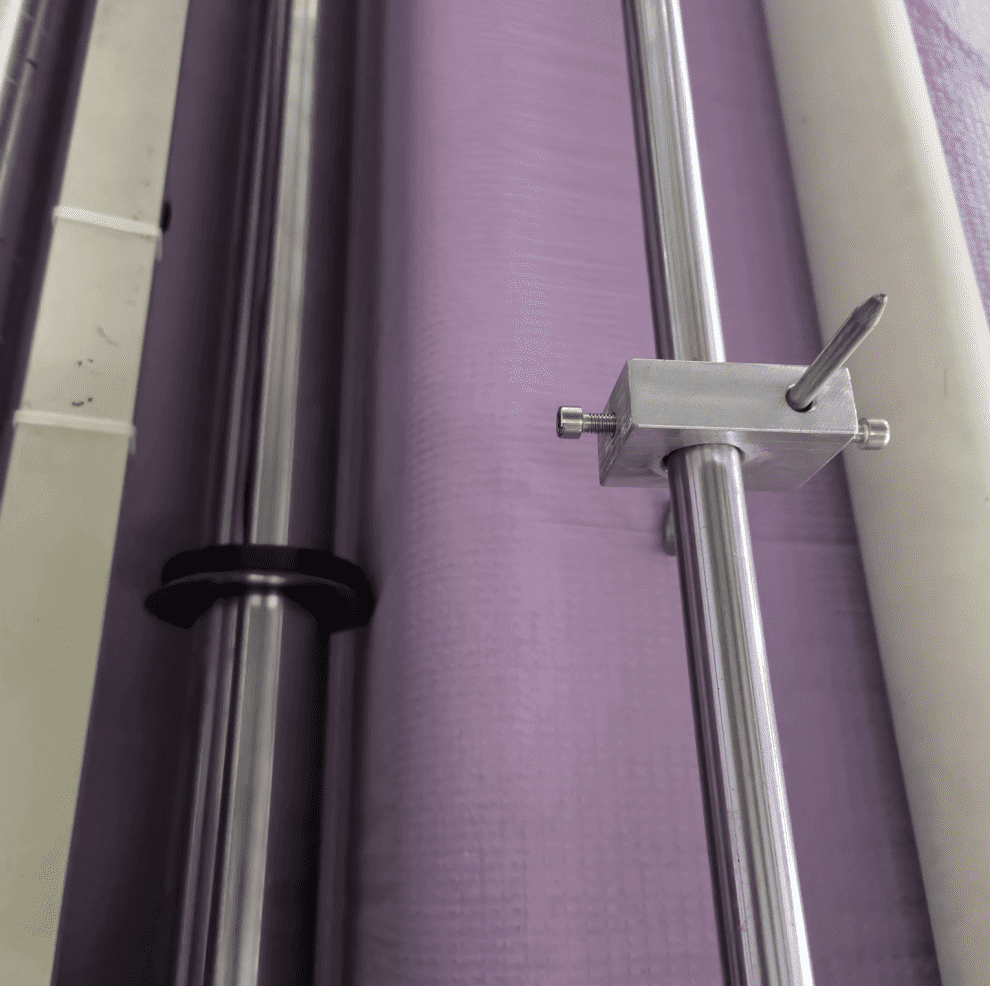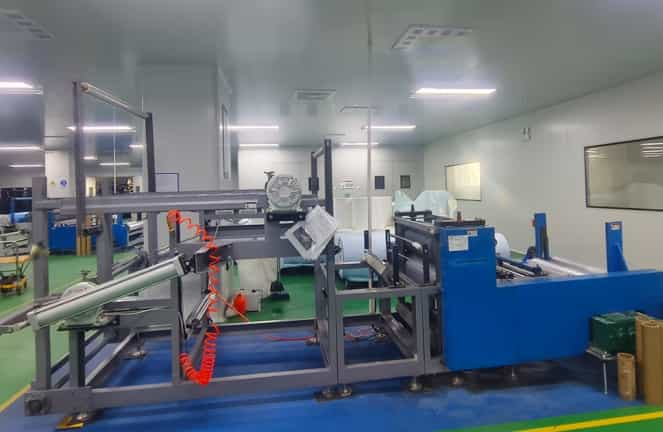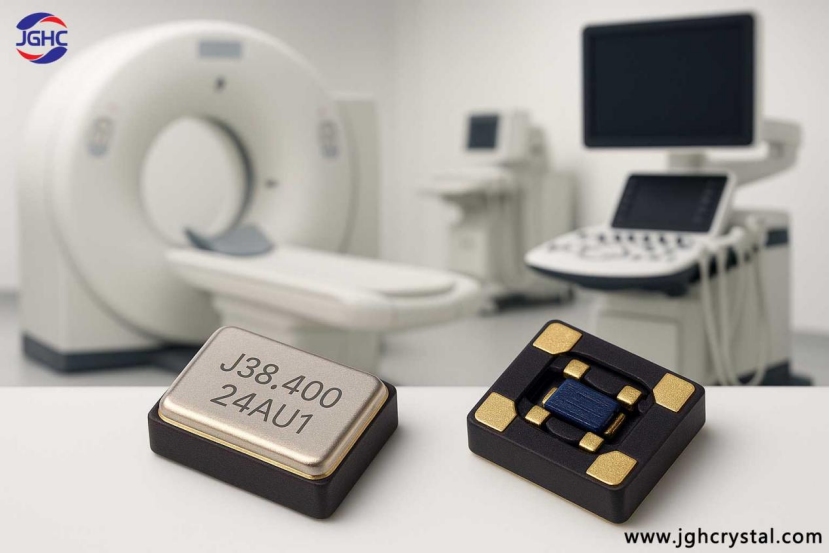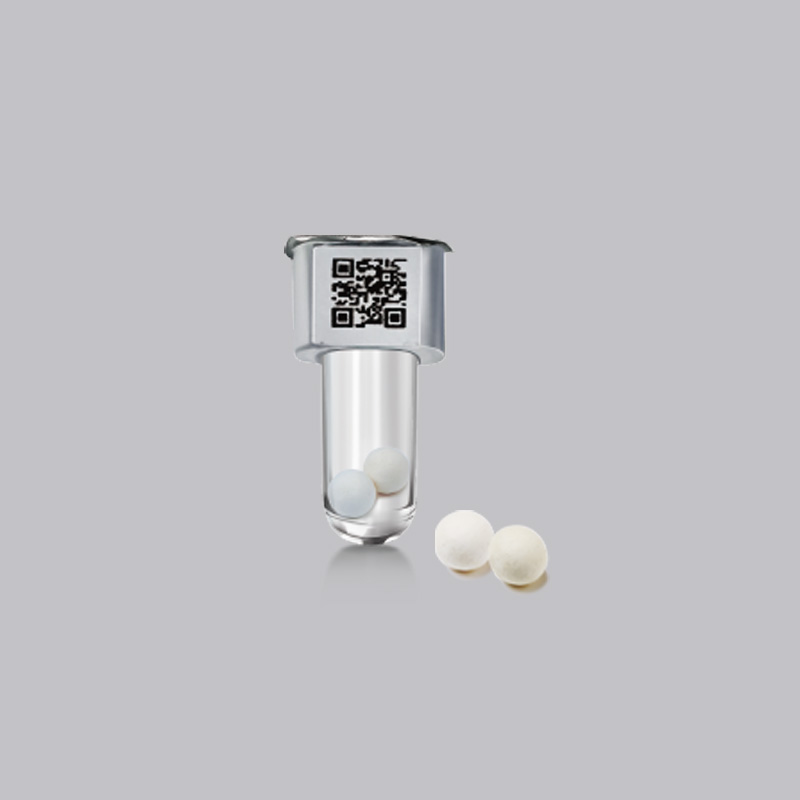Medical Household Compressed Nebulizer for Infants Children and Adults Advantages
1. Easy to operate with one click: 2. Fine and delicate atomization particles: 3. Adjustable and stable mist volume: 4. Medical grade: Junrong
1. Easy to operate with one click: 2. Fine and delicate atomization particles: 3. Adjustable and stable mist volume: 4. Medical grade: Junrong
In today’s dental industry, patient comfort and hygiene are non-negotiable. One of the simplest yet most essential tools in maintaining a clean and safe environment is the dental bib. Behind every effective bib is the careful selection of Dental Bib raw materials, which determine not only its strength but also its ability to resist fluids and provide maximum protection during procedures.

Modern dental bibs are often made using advanced Dental Bib composite membrane technology. These membranes combine multiple layers, including absorbent tissue and a waterproof backing, ensuring that fluids do not penetrate through to the patient’s clothing. This composite structure balances comfort with functionality, offering a soft surface for patients and a reliable barrier for dental professionals.

One of the most critical components in this manufacturing process is the Waterproof Dental Bib Raw Material. High-quality waterproof layers not only prevent fluid leakage but also enhance durability, ensuring the bib remains intact during extended procedures. Choosing materials with strong waterproof capabilities reduces waste and contributes to a more efficient clinic workflow.

When selecting a supplier, dental product manufacturers should look beyond just the physical properties of the raw materials. The consistency of quality, customization options, and logistical support all play a role in creating a seamless production experience. That’s where Telijie stands out in the dental supply chain.

As a trusted brand in Dental Bib raw materials, Telijie offers not only top-tier composite membranes and waterproof layers but also unmatched customer service. With fast response times, tailored material specifications, and comprehensive after-sales support, Telijie helps partners bring superior dental products to market efficiently and confidently. When reliability and quality matter, Telijie is the name professionals trust.
A series of three cuffs are wrapped around the calves, thighs and buttocks.
Inflation and deflation of these cuffs are electronically synchronized in rhythm with your heartbeat using the EKG or cardiogram signal.
During diastole, when your heart is relaxed, your heart and coronary arteries are normally filling with blood. During this relaxation phase the cuffs inflate sequentially from the lower legs up toward the heart, as shown in the diagram below.
This sequential inflation causes the heart to fill more easily and fully than normal, and also gently stretches your coronary vessels.
This stretching or ballooning causes the release of Nitric Oxide within the vessel walls. This nitric oxide rich environment stimulates the release of growth factors within the vessel walls that in turn stimulates the growth of new collateral vessels.
During systole, when your heart begins to pump, the cuffs rapidly and simultaneously deflate, creating a "vacuum effect" in the aorta.
This vacuum allows the heart to pump into a lower pressure system, which increases systolic unloading. All that means is that your heart does more work with less effort while you are receiving EECP treatment.

The new collateral vessels you grow around your heart during your EECP treatments re-supply the ischemic or blood-deficient areas of the heart. So rather than surgically grafting a vessel from your leg onto your heart to bypass the blockages you may have, as is done with bypass surgery, EECP utilizes the natural healing mechanisms of the heart to grow these new bypasses...Naturally and non-surgically!
During treatment the patient lies comfortably on a treatment bed while the pressure cuffs inflate and deflate rhythmically with the patient's own heartbeat.
Throughout the session most patients listen to music, watch a movie, or even doze. You may bring in your own VHS movies or CDs, or feel free to bring a family member to keep you company.
Who is a candidate for EECP:
1.Have chronic stable angina
2.Do not qualify as a candidate for invasive procedure(by pass surgery,angioplasty)
3.Patient don’t want to have a bypass surgery,EECP is an option
4.Patient got bypass surgery but angina still comes.
Suggestion before receiving Omay EECP treament:
1.Do not eat or drink too much one hour before receiving treatment
2.Urination before treatment
3.Better to wear knitted underwear to receive treatment
4.Blood pressure and heart rate test prior to beginning EECP treatment
5.Have patient relax when doing treatment,individuals can sleep or listen to the music
6.Individuals can stop the machine by click emergency button if feel uncomfortable
7.When finished treatment,people can lie on the bed 5 minutes longer,then drink some warm water or have some cookies.
What are the clinic benefits from this treatment?
1.Reduce the frequency and intensity of chest pain or eliminate it.
2.Decrease the use of medication
3.Ability to enjoy a more independently active lifestyle
More info,Pls visit our official web www.eecpcn.com . Of course,you can contact us directly.
Gastrointestinal (GI) polyps are a common type of digestive disease in clinical practice. They are abnormal growths in the digestive tract often triggered by inflammatory stimuli and carry a risk of becoming cancerous. In recent years, changes in lifestyle and dietary habits have led to a steady increase in the incidence of this condition. Early-stage GI polyps typically present no obvious symptoms, though patients may experience abdominal discomfort or changes in bowel habits.
As the disease progresses, symptoms such as rectal bleeding and vomiting may occur, reducing quality of life and increasing the risk of malignancy, thereby posing a threat to life. Currently, the primary clinical treatment involves endoscopic removal using a high-frequency electrosurgical unit (HFU), which allows for complete resection of the lesion and helps control disease progression.
Compared to open surgery, gastrointestinal endoscopy is much less invasive. However, standard endoscopy may still cause discomfort such as nausea and vomiting, which increases patient anxiety and may hinder the procedure.
The development of painless GI endoscopy—where anesthetics are administered before the procedure—has significantly reduced patient discomfort and postoperative pain. In their article "Clinical Observation on the Treatment of GI Polyps with High-Frequency Electrosurgical Unit under Painless Endoscopy", published in Modern Diagnosis and Treatment, researchers Chen Minggui and Wu Shunü studied 80 patients with GI polyps. Their findings showed that HFU treatment not only effectively resects lesions and controls bleeding but is also adaptable, easy to introduce into the body, and allows for detailed observation of the affected area. As such, it has become a widely used and effective method in clinical practice.
The emergence of gastrointestinal endoscopy technology has greatly improved the direct observation of lesions. Compared with traditional examination methods, it allows for more accurate identification of the location, extent, and number of lesions. However, conventional endoscopic interventions may cause discomfort during swallowing, increase procedural difficulty, and risk mucosal injury or bleeding.
Painless gastrointestinal endoscopy-assisted surgical treatment reduces the use of anesthetics, slows down gastrointestinal motility, and facilitates a cleaner incision. Under anesthesia, muscle tissues relax, which helps minimize surgical stress responses and lowers the risk of postoperative complications. This approach effectively removes diseased tissue and improves the patient’s quality of life.
In summary, for patients with gastrointestinal polyps, painless high-frequency electrosurgical treatment under endoscopy has proven to be effective, enhances quality of life, and is worthy of clinical adoption.
ShouLiang-med is currently committed to providing a wide range of high-quality high-frequency surgical devices for clinical use. Among them, the SEH80 series is recognized by the medical community for its stable energy output, comprehensive patient protection systems, strong instrument compatibility, and versatile mono- and bipolar functions. Looking ahead, the company is dedicated to offering safer and more efficient medical equipment to patients and healthcare providers worldwide.
In the realm of medical technology, precision is paramount, especially when it comes to imaging systems such as Magnetic Resonance Imaging (MRI), Computed Tomography (CT), and Ultrasound. These devices are crucial for diagnosing and monitoring a variety of medical conditions, and their ability to provide accurate, high-resolution images relies on highly precise timing systems. The heart of these timing systems lies in crystal oscillators—components that generate a stable frequency signal for the equipment to synchronize operations.

Medical imaging devices such as MRI, CT, and ultrasound machines require precise timing to ensure the accuracy of image data. These imaging systems rely on oscillators to control the timing of various operations—such as signal processing, data acquisition, and image reconstruction. For these devices to function effectively, the frequency signals generated by the oscillators must be stable and accurate.
In MRI machines, for example, crystal oscillators help control the timing of the magnetic pulses that interact with the body’s hydrogen atoms. The accurate timing of these pulses is essential for obtaining detailed and clear images. Similarly, in CT scans, oscillators synchronize the timing of X-ray emissions and detector scans, while in ultrasound, they regulate the timing of sound waves to create clear images of internal organs and tissues. In all of these scenarios, the stability of the oscillator frequency directly impacts the resolution and clarity of the final image.
The clock accuracy of medical imaging equipment is crucial because even the slightest timing error can lead to distortions in the images, which can, in turn, affect diagnosis accuracy. For example, in MRI, any slight misalignment in the pulse timing can lead to blurry images or incomplete data, which could lead to misdiagnoses. In CT and ultrasound, inaccurate timing can distort the scanned data, reducing the overall quality of the image.
To ensure the high-quality images required for accurate diagnosis, the clock frequency used in these imaging systems needs to be highly stable. This is where crystal oscillators play a vital role. A crystal oscillator is capable of maintaining a consistent output frequency for extended periods, with very minimal variation. This level of precision is necessary to guarantee that medical imaging equipment functions optimally and provides the best possible diagnostic images.
To further improve the performance of oscillators in medical imaging, technologies such as low phase noise and temperature compensation (e.g., TCXO) are integrated into the design. Low phase noise reduces unwanted fluctuations in the frequency signal, which in turn minimizes signal distortion. This is especially important in high-resolution imaging systems where even small amounts of noise can cause blurring and loss of detail. By incorporating low phase noise, medical imaging systems can achieve clearer and more accurate images.
Additionally, temperature fluctuations in the environment can affect the stability of oscillators. Since medical equipment often operates in various environments with fluctuating temperatures, it’s crucial to use oscillators that are designed to compensate for these temperature changes. Temperature-compensated crystal oscillators (TCXOs) are specifically designed to mitigate the impact of temperature variations on the oscillator’s frequency stability. This makes them ideal for use in medical imaging systems, where consistent performance is necessary to maintain the accuracy of the image and ensure the system operates reliably.
The W16 crystal oscillator is an excellent example of a component designed to meet the stringent requirements of medical imaging systems. The W16 offers exceptional frequency stability, ensuring that medical imaging equipment can maintain accurate timing over extended periods. Its low phase noise characteristics further enhance the stability of the frequency signal, contributing to clearer and more detailed imaging results. Moreover, the compact size of the W16 makes it ideal for integration into various medical devices, and its wide operating temperature range ensures reliable performance in diverse environments.
Whether used in MRI, CT, or ultrasound equipment, the W16 crystal oscillator delivers the performance required for precise and stable medical imaging. Its ability to withstand temperature fluctuations while maintaining superior accuracy makes it an invaluable component in the development of high-performance medical devices.
In summary, oscillators play a critical role in the performance of medical imaging equipment. The accuracy of the clock frequency in MRI, CT, and ultrasound machines is vital for generating clear, detailed, and reliable images. Technologies such as low phase noise and temperature compensation are essential for enhancing the stability and resolution of these systems. By utilizing advanced oscillators like the W16, manufacturers can ensure their medical equipment performs at the highest level, ultimately contributing to better diagnostic outcomes and improved patient care.
For medical imaging systems to operate efficiently, the reliability and precision of the crystal oscillators they use are key. With their superior frequency stability and ability to perform in challenging environments, oscillators like the W16 provide the foundation for high-quality imaging and accurate diagnostics.
When it comes to medical packaging, selecting the right material is critical for maintaining product integrity and patient safety. Among the various options available, Crepe Paper stands out for its exceptional strength, flexibility, and superior barrier properties. It is widely used across healthcare facilities, providing a reliable solution for wrapping instruments and maintaining sterility throughout the surgical process.

One of the leading uses of Crepe Paper in healthcare is as a Medical Surgical Paper. Designed specifically for surgical procedures, this paper combines excellent breathability with the toughness required to endure the rigorous sterilization process. Its high adaptability allows it to conform easily to different shapes and sizes of medical tools, ensuring that every piece is securely wrapped and protected.、

Additionally, Crepe Paper serves as an outstanding Sterilization Wrapping Paper, offering both protection and performance under high-temperature and high-pressure conditions. Whether used in steam, EO (ethylene oxide), or plasma sterilization methods, this material ensures that the sterile barrier is preserved until the point of use. Hospitals and clinics worldwide trust this versatile solution to uphold their highest standards of hygiene and safety.

Choosing the right supplier for your Crepe Paper needs is just as important as the material itself. Telijie, a renowned name in the industry, offers top-grade Crepe Paper that consistently meets international standards. Beyond product quality, Telijie is committed to providing exceptional customer service, fast delivery, and professional technical support. Partnering with Telijie means not only securing the best materials but also enjoying a seamless, reliable experience tailored to your specific needs.
Poclight's hormone product line encompasses seven critical indicators: Progesterone, Estradiol (E2) clia kits, Testosterone, Follicle-Stimulating Hormone (FSH), Luteinizing Hormone (LH), Prolactin (PRL), and β-hCG clia testing kits.
One of the standout features of Poclight's hormone clia testing kits is their high sensitivity and specificity. Using homogeneous chemiluminescence technology, that ensure precise detection of small molecular hormones, which is crucial for accurate diagnostics. This level of precision makes tests reliable for both clinical and research settings, providing healthcare professionals with the confidence they need in their diagnostic decisions.

Moreover, kits come as single-use lyophilized reagents, making storage and transportation a breeze. They can be kept at room temperature and have a shelf life of up to 18 months. This convenience not only simplifies logistics but also ensures that healthcare facilities, especially in remote areas, have easy access to essential testing solutions without the worry of refrigeration.
Another significant advantage is the rapid reporting time. Testing process can deliver results in as fast as 5 minutes, allowing healthcare providers to make timely decisions regarding patient care.
Poclight's hormone tests offer a cost-effective solution. We are committed to supporting advancements in reproductive health and providing reliable testing solutions that meet the needs of healthcare providers and patients. Embrace the future of hormone testing with Poclight's innovative products that prioritize accuracy, convenience, and affordability.
The difference between a medical recorder and a regular recorder mainly lies in the following aspects:
1. Design and materials:
The design and materials of medical recording machines are better. Medical recording machines usually use metal casings, which have higher seismic performance and durability to meet the special needs of medical environments.
2. Disc format support:
The medical recorder supports specific medical disc formats, such as DICOM (Digital Imaging and Communication in Medicine). DICOM is a commonly used image storage and transmission standard in the medical field, used to store medical image data such as CT scans, X-ray images, etc. And ordinary burners support more common disc formats, such as CD DVD、 Blue light, etc.
3. Data security:
Medical recording machines have higher requirements for data security. Medical image data is sensitive personal privacy information, so medical burners usually have stronger encryption and security measures to ensure that the data is not accessed or tampered with by unauthorized personnel.

4. Burning speed and capacity:
Medical recorder typically have higher burning speeds and larger storage capacity. Due to the large volume of medical imaging data, medical recording machines can complete data recording and storage faster to meet the data processing needs of medical institutions.
5. Durability and stability:
Medical recorder have higher durability and stability. Medical environments often require long-term operation and frequent use of recording machines. The design and manufacturing of medical recording machines place greater emphasis on stability and reliability to ensure that they can function properly in various situations.
6. Compatibility and ease of use:
jenshimvr Medical recorder typically have better compatibility and ease of use. Medical devices and software often have specific standards and protocols, and medical recorder need to work closely with these devices and software to ensure data interoperability and compatibility. At the same time, medical recording machines are also easier to operate and manage, making it convenient for medical personnel to record and manage data.
In summary, there are significant differences between medical burners and ordinary burners in terms of design and materials, disc format support, data security, burning speed and capacity, durability and stability, compatibility and usability. Medical recording machines are better, meeting the special needs of the medical industry and ensuring the security and stability of medical imaging data.
Chemiluminescent immunoassay (CLIA) kits have become indispensable tools in modern clinical laboratories, thanks to their high sensitivity, specificity, and automation potential. Whether you're screening for infectious diseases or monitoring tumor markers, understanding how these kits work and how to choose the right one is critical for reliable results and efficient diagnostics.
1. Overview of Chemiluminescent Immunoassay Kits
Chemiluminescent immunoassay kits detect specific antigens or antibodies based on a luminescent chemical reaction. Here’s how it works: an antigen-antibody binding event is coupled with a chemiluminescent substrate that emits light when catalyzed by an enzyme. The emitted light is then measured using a luminometer, with the intensity proportional to the concentration of the target analyte.
Application Areas:
- **Clinical Diagnostics**: thyroid function tests, cardiac markers.
- **Infectious Disease Testing**: CRP, SAA, IL-6, PCT, KL-6, HBP, COVID-19 antibody/antigen detection.
- **Tumor Marker Detection**: PSA, AFP, CA125, and more.
- **Cardiac**: D-dimer, BNP, NT-proBNP, CK-MB, Myo, hs-cTnT, RF detection.
- *Fertility Tests*: beta-hCG, Prolactin, Prog, Cortisol, FSH, AMH, Testosterone, LH, Estradiol

2. Selection Criteria and Considerations
### Sensitivity and Specificity:
The reliability of diagnostic results hinges on sensitivity (true positive rate) and specificity (true negative rate). High sensitivity ensures even trace amounts of biomarkers are detected, while high specificity reduces false positives. Always check:
- Sensitivity % (ideally >95%)
- Specificity % (ideally >95%)
### Detection Range:
Different kits are tailored for specific analytes. Make sure to align your selection with your lab’s testing focus:
- **Hormones**: TSH, LH, hCG
- **Viral Markers**: HBsAg, HCV Ab
Verify that the kit covers the necessary linear detection range for your sample type and concentration needs.
3. Product Quality and Certification
Quality assurance is non-negotiable in clinical diagnostics. Look for kits that carry:
- CE Mark (Europe)
- FDA Approval or EUA (U.S.)
- ISO 13485 certification for manufacturing processes
Additionally, consider the manufacturer's:
- **Reputation**: Years in the market, reviews, known partnerships
- **Production Standards**: GMP compliance, QC systems
- **Batch-to-batch consistency**: Crucial for longitudinal studies or repeated testing
4. Ease of Use
Modern CLIA kits are often designed with automation in mind, but workflow simplicity still varies. Evaluate:
- **Number of steps**: Manual vs. automated workflow
- **Sample preparation**: Plasma, serum, whole blood compatibility
- **Training Requirements**: Is the kit suitable for labs with limited technical personnel?
A good kit should offer intuitive instructions and come with technical support when needed.
5. Cost and Value for Money
CLIA kits vary in price depending on:
- Target analyte
- Brand reputation
- Certification level
While budget is important, avoid choosing solely based on price. Instead, assess:
- Cost per test
- Shelf life and storage conditions
- Bundled services or equipment availability
One of Poclight's strongest advantages is that our analyzer offer a simple one-step operation, making it highly user-friendly. Additionally, our kits eliminate the need for washing or separation processes, which not only saves time but also reduces the potential for errors. With minimal maintenance requirements, these kits are designed to facilitate smooth workflows, ensuring that even labs with limited technical personnel can operate them effectively.
Another strong advantage is the reagents is Lyophilized Beads NO COLD CHAIN NEEDED, NO refrigerators needed, with long shelf-life.
This guide provides a comprehensive overview to help you choose the right chemiluminescent immunoassay kits for your laboratory needs.
Anemia is a common health issue that can arise from various deficiencies, particularly in folate, vitamin B12, and serum ferritin. Poclight's anemia testing kits (CLIA) utilizes homogeneous chemiluminescent immunoassay to provide a thorough assessment of these key serum markers. This holistic approach aids clinicians in accurately diagnosing the underlying causes and types of anemia, facilitating early intervention and effective treatment for patients.
Traditional methods for anemia testing often have significant drawbacks. Many conventional techniques rely on complex procedures that can introduce variability and require extensive sample handling. These methods may also lack the sensitivity needed to detect subtle deficiencies, leading to potential misdiagnoses and delayed treatment. As a result, there's a pressing need for more reliable and streamlined testing solutions.
Poclight‘s anemia testing kits addresses these challenges with several distinct advantages. The innovative use of graphene oxide eliminates the need for magnetic beads, simplifying the process by removing separation and washing steps. This not only streamlines the workflow but also enhances the overall performance of the assay, increasing sensitivity by one to two orders of magnitude.
Moreover, Poclight's kits offers exceptional cost-effectiveness. The Lyophilized Beads reagent is designed for individual packaging, eliminating the need for refrigeration and significantly reducing the risks associated with transportation and storage. The compact design of our analyzer can be widely used in multiple scenarios, making them ideal for hospitals, clinics, and laboratories.

Poclight's anemia testing kits (CLIA), including Active-B12 (AB12) test kits (Homogeneous Chemiluminescence Immunoassay), Folate test kits (Homogeneous Chemiluminescence Immunoassay), stands out as a groundbreaking solution in the field of diagnostic testing. By combining advanced technology with practical design, we empower healthcare providers to deliver timely and accurate anemia diagnoses, ultimately improving patient outcomes.